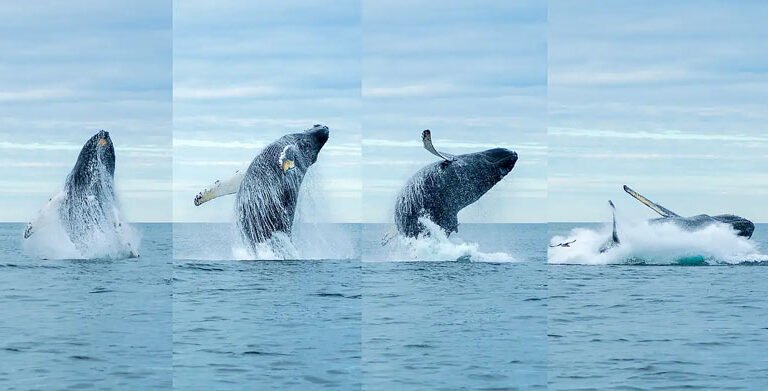Ask anyone who knows me well, and they will tell you that I am not known for my patience. It’s become a bit of a recurring joke with my Island Institute teammates—want a quick decision? Call Sue. The downside: I don’t often think things all the way through before launching the next project. The upside: once decided, I am persistent in my pursuit of the goal.
So when I fell out of my fishing kayak in pursuit of the summer’s first striped bass in early June, I got right back in and re-launched.
First, I should confess that I didn’t exactly “fall.” It was more like a slow-motion, clumsy cartwheel from the bank to the kayak, to the water of Penobscot Bay. Weeks later, the bruises remind me that it was no easy trip to the rocky bottom of my little cove.
Second confession: I got skunked. Not a nibble or a single heart palpitation-inducing tug on my fly line.
It’s not the first time I’ve cast my line for striped bass and been denied. I have lived on Verona Island for more than 20 years and I’ve lost more flies than fish.
I tied on another fly, something with a long chartreuse tail, and kept paddling.
On calm late afternoons, when the wind dies down, we can see the fish causing V-shaped trails on the water. Last year we purchased fishing kayaks, and now I can launch from my backyard and chase down the waking fish. That doesn’t mean I can catch them.
“Catching waking striped bass on a fly can be hard. Really hard,” wrote Capt. Peter Fallon, president of the Maine Association of Charterboat Captains and co-founder of Gillies & Fallon Guide Services, LLC. “So many elements need to come together and do so at precisely the right instant to succeed.”

So far, nothing was coming together very well for me. I recently contacted Capt. Fallon in search of advice and perhaps a bit of reassurance. Was it my lame attempts at casting while trying to stay afloat, or were the striped bass eluding even the experts? Why not ask the guy who can be found guiding and writing for “MaineStripers.com”?
“Water clarity and temps are more like early July than mid-June,” wrote Capt. Fallon. “If you love to sight cast to shallow water striped bass, get out there now.”
Enter the persistence. I lost my perfectly new Lefty’s Deceiver—a trusted fly for trolling striped bass—during the unexpected cartwheel into the water. I tied on another fly, something with a long chartreuse tail, and kept paddling. Paddle, jig, paddle.
Nothing but a school of lion’s mane jellyfish. From the safety of my kayak, the undulating oranges and reds of the jellyfish were mesmerizing. So much so, that I almost forgot I was having no luck on my quest for striped bass. Where were they?
“The most significant change over time is in the age structure of the striped bass population,” replied Fallon, in response to my next set of questions. (I did say persistent.)
“We just don’t have the diversity of size/age in fish over 30-32-inches that we used to see. When I started fishing the Kennebec in the early ‘90s, we had far more fish that were 36 inches or larger. As the minimum size decreased in most states from 36 inches to 32 inches and then 28 inches (and bag limit increased from one fish to two fish per angler, per day), we watched our fishery change significantly. Fish over the legal size-limit became much more scarce,” Fallon explained.
Except that this fly fisherwoman would settle for one tug on the line, and I’ll know I wasn’t soaked, bruised, and lost a fly for nothing. My last question for Fallon was about what he was seeing in striper populations and locations. Maybe I need to head south?
“Reproductive results since 2015 have been pretty dismal,” he said. “Many of us are concerned about climate-change driven environmental conditions in striper spawning areas. Are they reproducing in more places than we think, or has something changed in their traditional nursery grounds that has more of them migrating at an earlier age?
“Some striper anglers speculate that our fishing in Maine will improve as waters warm along the entire coast. The shift northward of the black sea bass population is dramatic, well documented, and driven by climate change. But what happens with another species, like striped bass, is so complex I think it’s premature to predict that more bass will travel to Maine in their annual migration,” concluded Fallon.
When the striped bass show up again next June, I’ll be waiting. Next time, in dry clothes and with more than one spare fly.
Sue Bernier is chief philanthropy and marketing officer with the Island Institute, publisher of The Working Waterfront. She may be reached at sbernier@islandinstitute.org.





